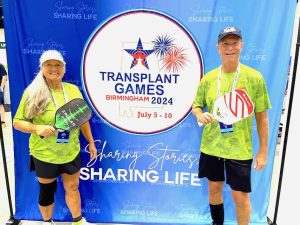Contact-lenses improve vision-related quality of life in children compared with glasses, especially in the areas of appearance and athletics, reports Dr. John Henahan of Spectrum Eyecare in Peachtree City, Ga. “Many parents are fearful of allowing their children to wear contact lenses, but this study conclusively shows that children feel better about themselves when wearing contact lenses, especially after age 10”., continues Dr. Henahan. “Contact lenses are much safer and easier to care for than 20 years ago.”
“The growing body of research in children’s vision correction continues to demonstrate that contact lenses provide significant benefits to children beyond simply correcting their vision.
This three year, multi-site study showed considerable improvement for contact lens wearing children 10 years or older in areas of appearance, participation in activities, and satisfaction with vision correction, and it remained or improved over three years,” said Jeffrey J. Walline, O.D, Ph.D., of The Ohio State University College of Optometry and leader of the Adolescent and Child Health Initiative to Encourage Vision Empowerment (ACHIEVE) Study, the largest randomized trial of its kind.
Researchers note that the most surprising finding may be children’s reports of improved quality of life with regard to handling contact lenses compared with glasses, as it is often assumed that glasses are much easier to manage than contact lenses.
“Although contact lenses may require more adept handling, daily disposable contact lenses decrease this burden, and the fact that contact lenses may be lost or broken less often than glasses outweighs the slight increase in time spent inserting and removing contact lenses,” said Dr. Walline. “Many children remove their glasses multiple times per day during gym, recess or other activities, which increases the chances of loss or breakage,” according to Dr. Henahan.
Four hundred eighty-four 8- to 11-year-old nearsighted children participated in the randomized, single-masked trial conducted from September 2003 to October 2007 at five clinical centers in the United States.
Children were randomly assigned to wear spectacles (n=237) or contact lenses (n=247) for three years. Children randomly assigned to wear contact lenses were provided the option of daily disposable or two-week disposable lenses, and they chose daily disposable contact lenses 93.3 percent of the time.
Researchers measured outcomes using the Pediatric Refractive Error Profile (PREP), an instrument used to compare the vision-specific quality of life between children affected only with refractive error.
The PREP survey consisted of 11 scales: activities, appearance, far vision, near vision, handling, peer perception, satisfaction, academics, symptoms, overall vision, and overall PREP.
Doctors will typically evaluate a child’s maturity and level of parental support in deciding whether a child is ready for contact lenses. Dr. Walline advises parents and eye care practitioners to look beyond the visual benefits when choosing the most appropriate vision correction modality for children requiring vision correction.
At Spectrum Eyecare in Peachtree City, Dr. John Henahan works with many children to fit contact lenses, as well as treating common eye conditions, such as pink eye.
To learn more, visit www.speceye.com or contact the office at 770-487-0667.












Leave a Comment
You must be logged in to post a comment.